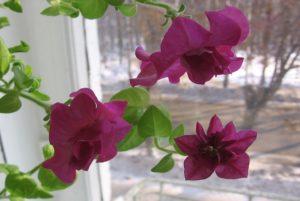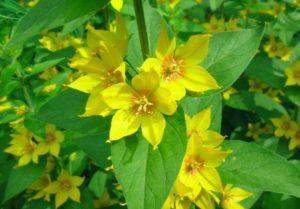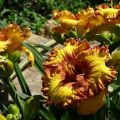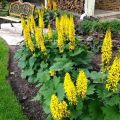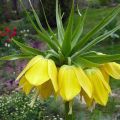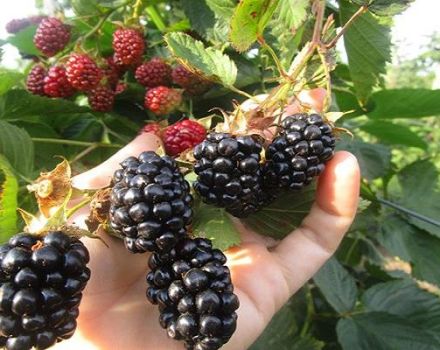Preparing geyhera for winter, types of shelters, pruning and care in spring
Geichera is a representative of the Saxifrage family, a herbaceous plant with an original color of leaves. The second name is mountain undergrowth. The homeland of Heuchera is Mexico and North America. In Russian climatic conditions, the plant confidently acclimatized and gained popularity among landscape designers. How to properly prepare Geykhera for the difficult Russian winter is a question that often worries gardeners.
In what cases do you need to cover the plant for the winter
Heuchera is a relatively frost-resistant plant. In the southern regions, no preparatory measures are needed for the cold season. In central Russia, the bush should be closed. In winters with little snow, the root system may suffer and freeze out.
Important! If in winter the air temperature drops below minus 10 degrees, then it is recommended to cover the heuchera bushes.
With the onset of spring heat, additional shelters are removed, heuchera is cleaned of last year's dried foliage and mineral dressing is applied. Young bushes are spud and mulched with peat or humus. It is not recommended to use fresh manure, the plant can get sick and get burned.
Pruning heuchera for the winter
Whether to cut the bush for the winter is a moot point. Gardeners are guided by personal experience. You should not remove the leaves of the plant, you need to cut off the flowering stems. The remaining foliage will protect the bush from frost in winter. After the end of the flowering process, the remaining flower stalks are no longer needed, they only take away strength, moreover, the bush quickly loses its decorative shape. Heuchera pruning is necessary to maintain the exquisite beautiful appearance of the plantings and to save the strength of the North American beauty before winter.
For some species and varieties, peduncle pruning is carried out even before flowering. The buds and flowers of these plants do not always look attractive, and, according to landscape designers, spoil the bush.
The main advantage of the North American beauty is decorative expressive leaves of unusual color and shape.
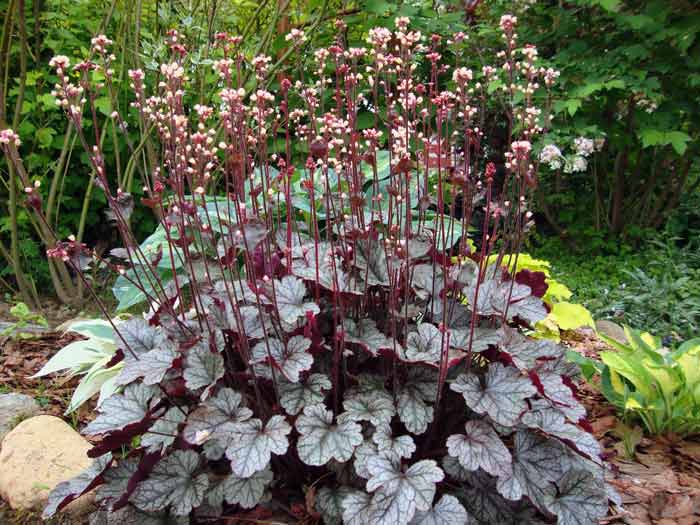
Shelter for the winter
The root system does not go deep into the ground, it is located close to the surface, therefore, in order to avoid freezing, the plant is covered with various additional shelters for the winter:
- dried forest moss;
- fallen leaves;
- straw;
- sawdust;
- polymeric covering material.
The basic rule is that the bush must "breathe". Do not cover the roots with film covers, this can cause a decay process or a fungal infection.
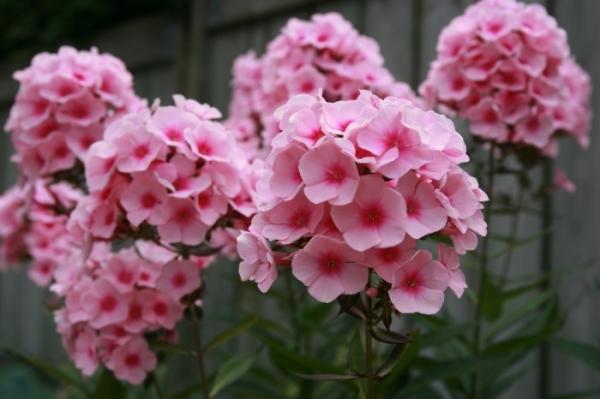
Covering the bushes with sphagnum will preserve the root system and create additional antibacterial protection, in addition, the remains of dead moss serve as an excellent organic fertilizer. Before preparing for the winter, the bushes are spud.
Features of wintering of Heuchera in different regions
The complex of care measures depends on the place of planting and growth. In warm regions with a southern climate, it winters easily, without shelter. Natural protection is withered leaves. In central Russia, in the Moscow region, Siberia, in areas with a difficult and harsh climate and winters with little snow - shelters as preparation for cold weather are required. There are varieties with increased frost resistance, capable of withstanding bitter frosts at -40 C. For example, Forever Purple, Blood Red, Gooseberry-leaved and others.

Further care after winter
With the first rays of the spring sun, the bushes awaken. It is necessary to clear the bushes of last year's foliage, remove shelters for the winter, pour warm water and feed the awakened bushes. Fertilizers should not be overused, heuchera is used to growing on poor rocky soils. The concentration of mineral complexes can be underestimated by half.
Every spring, plants are sprayed from pests and fungal diseases, sprinkled with wood ash. The bushes can be mulched with humus and a mixture of peat and sand after hilling the plantings.
Powdery mildew is the main ailment of Heucher. In April, they carry out preventive treatment of the bushes with Bordeaux liquid. To improve the brightness of the leaves, the plants are sprayed with a solution of brilliant green in the ratio: 10 drops of the product per 10 liters of water. Propagated by Heuchera seeds, cuttings or by dividing an adult bush. Planting young seedlings into the ground is carried out in the spring, when the temperature of the soil and air is above +12 C and the threat of frost has passed. The plant is planted with seeds for seedlings in early March. It is not recommended to plant young bushes in the fall, before winter.

Possible difficulties
Correctly selected variety and systemic care reduce the risk of growing failures to zero. The nuances of plant care:
- Planted on the west or east side of the garden area. Good lighting of the bush is necessary to improve the brightness of the leaves.
- Stagnation of moisture at the roots should not be allowed. It is better to skip watering than overmoisten the plant.
- Do not make unnecessary plant transplants, heuchera will hurt and grow for a long time, only adult bushes with a formed root system are transplanted.
- Some varieties need to be shaded.
- In the middle lane, plants should overwinter under shelters.
- Soils are chosen with an alkaline reaction.
- The best neighbors are shade-tolerant plants.
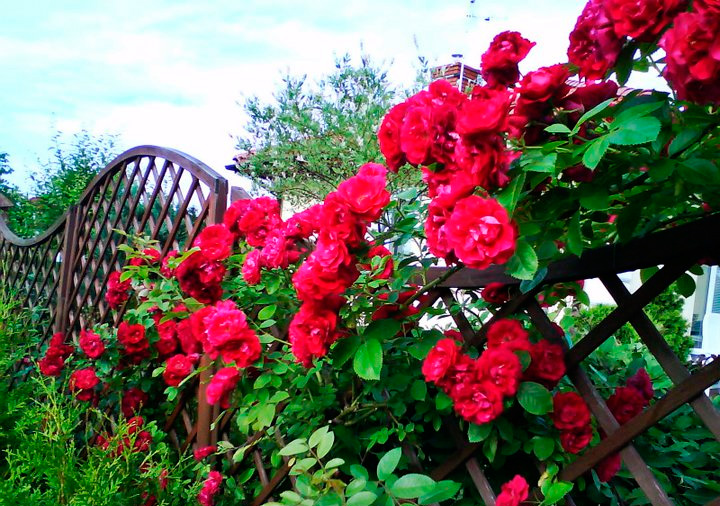
In order for heuchera to become a decoration of a personal plot, it is necessary to choose the right place and choose a flower arrangement. Landscape designers often plant different varieties and types of geyher together, plants with different leaf colors are perfectly combined. The North American beauty adorns and complements the alpine slides; heuchera looks elegant in a single landing.
Vividly colored varieties are suitable for decorating the edges of flower beds and borders, planting bushes along garden paths and decorating tall vegetable beds.
Observing the rules of care and listening to the advice of landscape designers, you can create unusually bright and beautiful flower beds in your area. Geichera will not give beautiful flowers, but diversifies flower plantings with beautifully shaped leaves with an unusual color.
